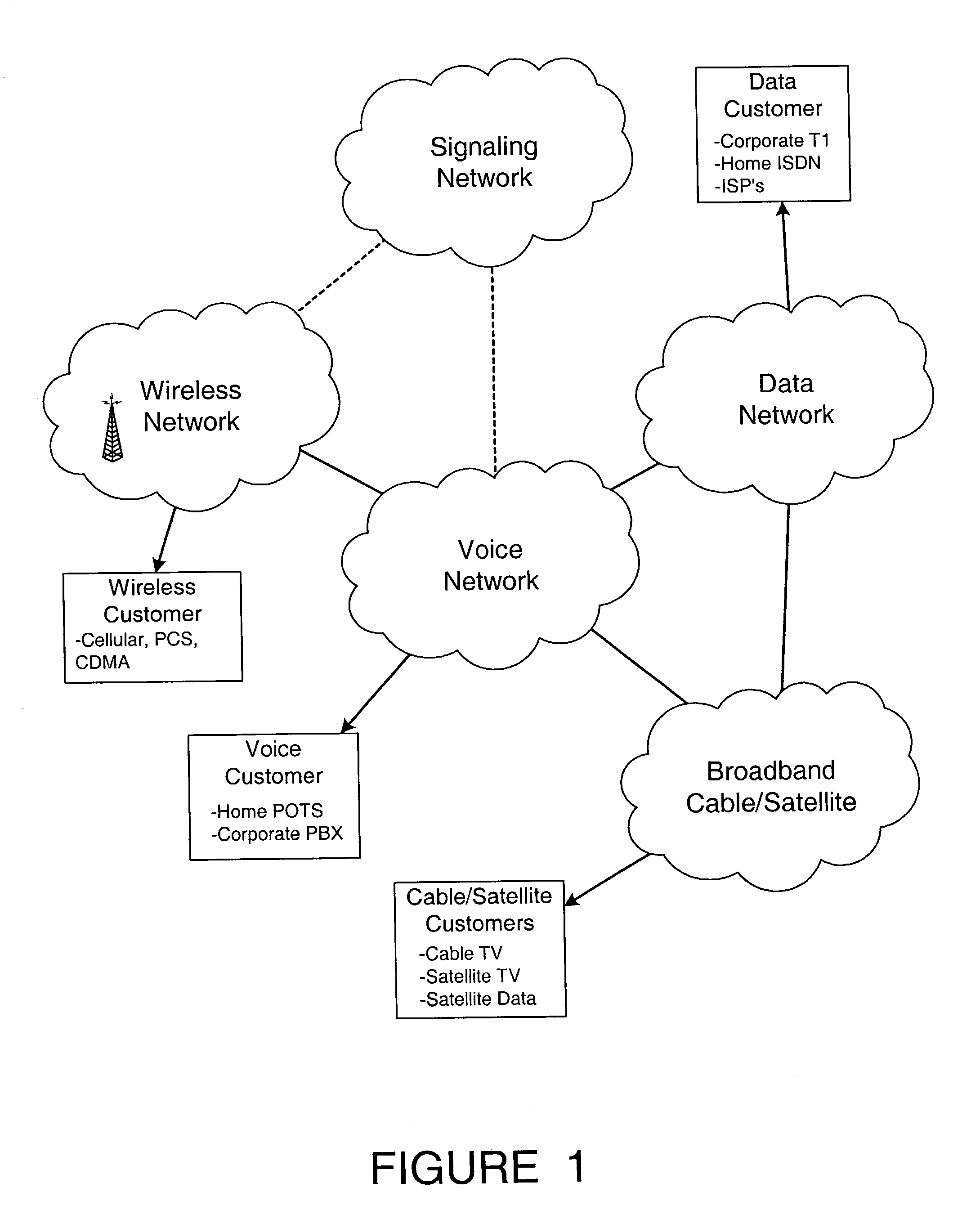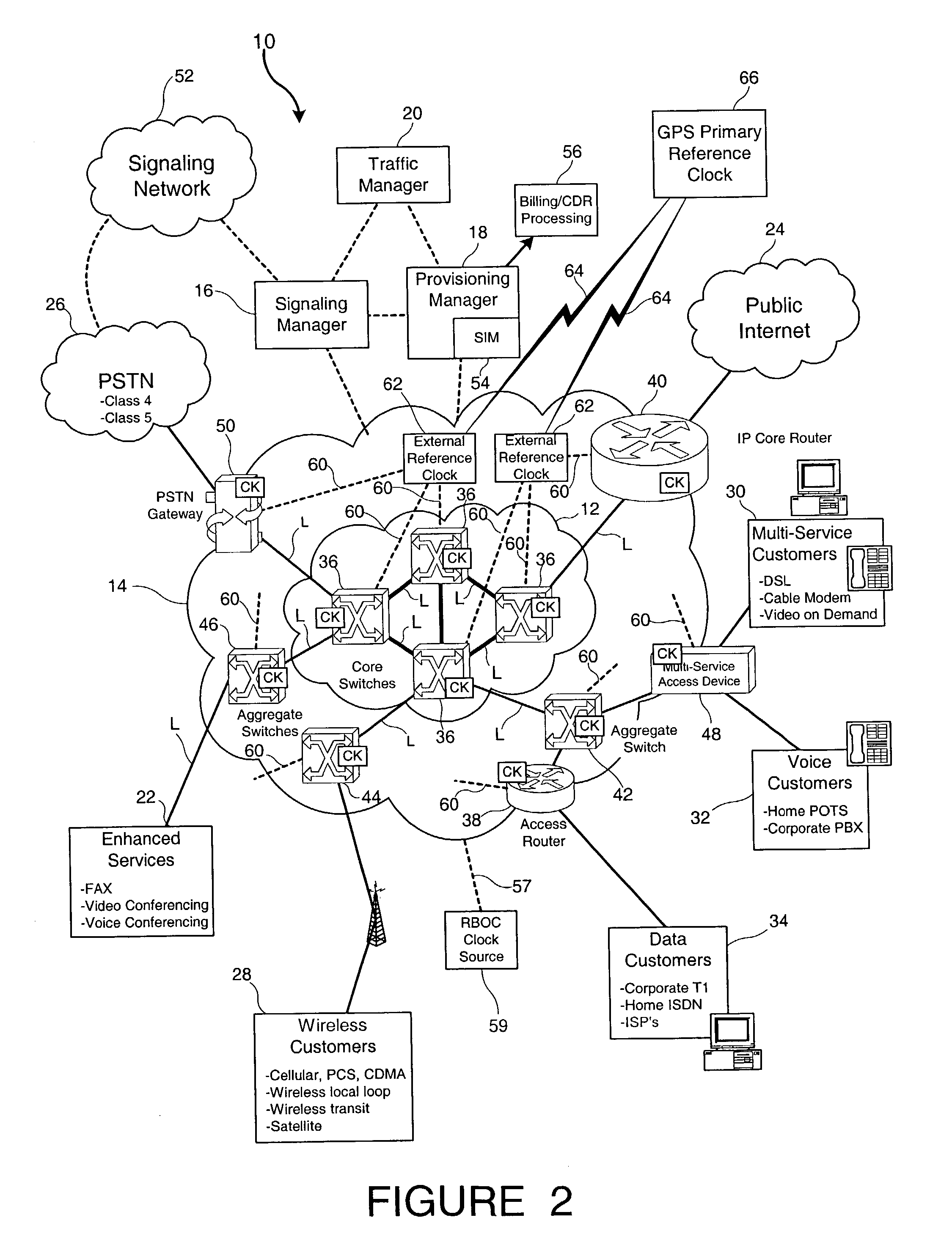Traffic manager, gateway signaling and provisioning service for all packetized networks with total system-wide standards for broadband applications including all legacy services
a gateway signaling and gateway technology, applied in the field of management and control of broadband integrated services, can solve the problems of inability inability to fully accommodate the information and data transmission requirements of broadband equipment, and traditional narrowband digital techniques such as tdm, which cannot be used to transfer any other traffic, etc., to achieve maximum network efficiency, optimum performance, and bit error rate
- Summary
- Abstract
- Description
- Claims
- Application Information
AI Technical Summary
Benefits of technology
Problems solved by technology
Method used
Image
Examples
Embodiment Construction
[0031]Preferred embodiments of the invention are described below with reference to various examples of how the invention can best be made and used. Like reference numerals are used throughout the description and several views of the drawing to indicate like or corresponding parts.
Packet System Architecture
[0032]A telecommunications network 10 constructed according to the present invention provides high bandwidth services to existing narrowband networks and broadband networks. Referring to FIG. 2, the telecommunications network 10 includes a packet core network 12, a physical network 14, a signaling manager 16, a provisioning manager 18 and a traffic manager 20. The service access nodes connect the packet core network 12 to various services including enhanced services access 22, ISP access 24, PSTN access 26, wireless access 28, multi-service customer devices 30, 32 and data customer devices 34.
[0033]Referring again to FIG. 2, a number of broadband packet switches 36 are interconnect...
PUM
 Login to View More
Login to View More Abstract
Description
Claims
Application Information
 Login to View More
Login to View More - R&D
- Intellectual Property
- Life Sciences
- Materials
- Tech Scout
- Unparalleled Data Quality
- Higher Quality Content
- 60% Fewer Hallucinations
Browse by: Latest US Patents, China's latest patents, Technical Efficacy Thesaurus, Application Domain, Technology Topic, Popular Technical Reports.
© 2025 PatSnap. All rights reserved.Legal|Privacy policy|Modern Slavery Act Transparency Statement|Sitemap|About US| Contact US: help@patsnap.com



